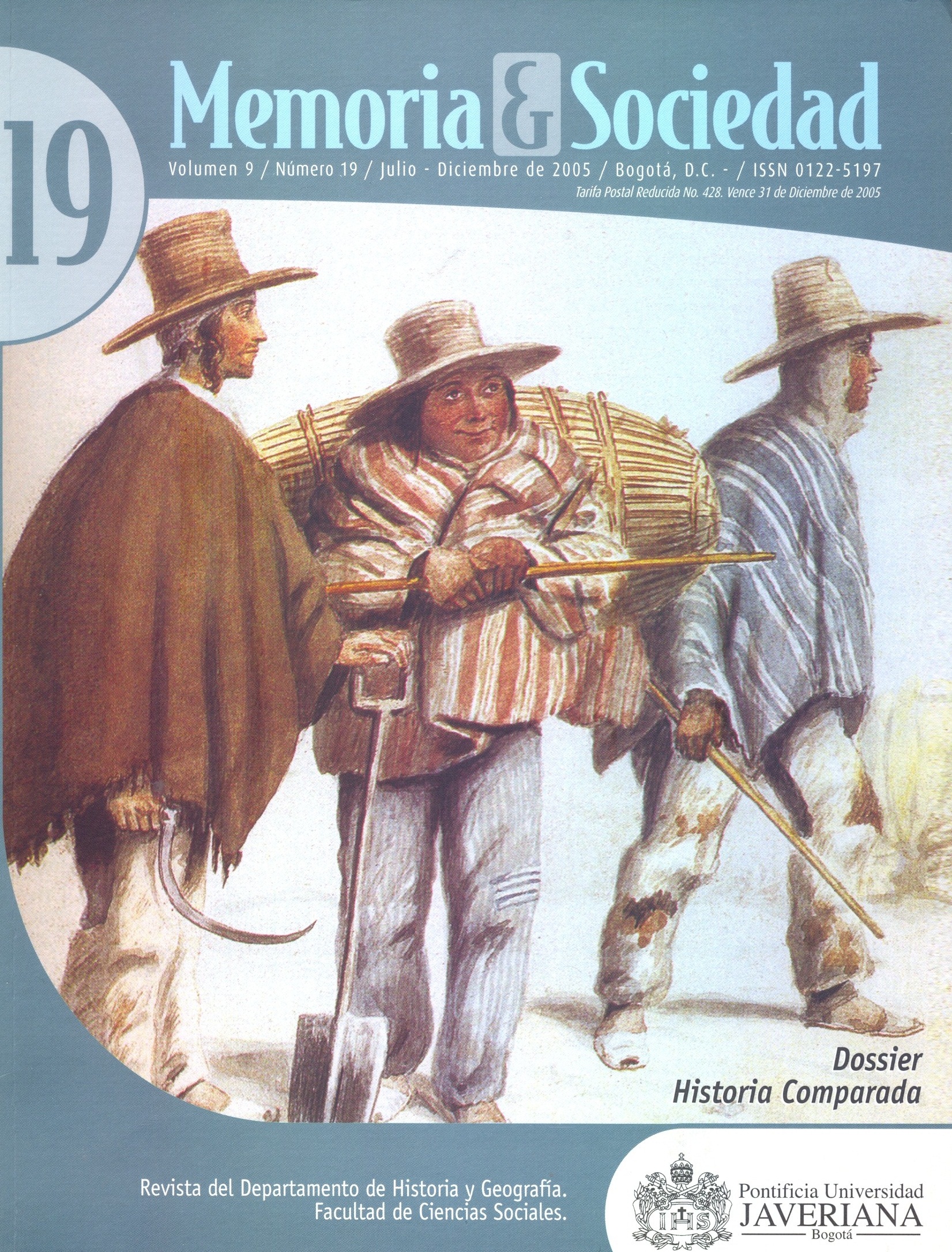Abstract
In the XVII century, the control of the body was essential in the foundation of the social order in Nueva Granada. The practice of religious rules must integrate the body into the spiritual experience, keeping away any reality that could take it to sin. However, the public character of experience of faith, introduced by the Counter-Reformation gave a new focus to the body but as a mystic body –suffering, hurted, sorrowing-, which, through hagiography written in Nueva Granada. The imitation of Jesus virtues and the practice of the Sacraments converted it in the axis of configuration of the social body.The journal Memoria y Sociedad is registered under a Creative Commons Attribution 4.0 International Public License. Thus, this work may be reproduced, distributed, and publicly shared in digital format, as long as the names of the authors and Pontificia Universidad Javeriana are acknowledged. Others are allowed to quote, adapt, transform, auto-archive, republish, and create based on this material, for any purpose (even commercial ones), provided the authorship is duly acknowledged, a link to the original work is provided, and it is specified if changes have been made. Pontificia Universidad Javeriana does not hold the rights of published works and the authors are solely responsible for the contents of their works; they keep the moral, intellectual, privacy, and publicity rights.
Approving the intervention of the work (review, copy-editing, translation, layout) and the following outreach, are granted through an use license and not through an assignment of rights. This means the journal and Pontificia Universidad Javeriana cannot be held responsible for any ethical malpractice by the authors. As a consequence of the protection granted by the use license, the journal is not required to publish recantations or modify information already published, unless the errata stems from the editorial management process. Publishing contents in this journal does not generate royalties for contributors.

